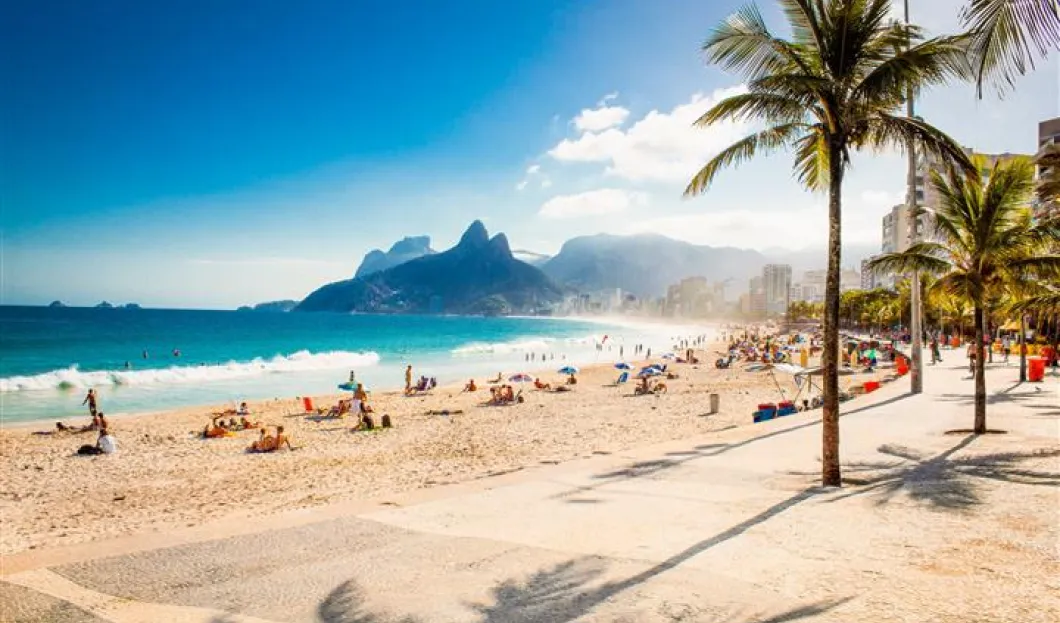
Tourism in Latin America and the Caribbean has recorded positive growth. Amid the economic storm in the region, the sector has been a source of considerable revenue for the governments. In 2015, the number of foreign visitors recorded in the region amounted to more than 96.6 million, the highest number reached over the last decade, according to the World Tourism Organization (UNWTO).
The rebound, analysts say, was the result of greater inflows of Americans, due to the strength of their currency, as well as a growing and unstoppable demand for travel among the Latin American middle class, with seven out of every ten arrivals originating within the subcontinent.
The US, the leading source market for tourism in Latin America and elsewhere, has always been the engine driving and sustaining the sector south of the border. Between January and November 2015, according to that country’s Office of Travel and Tourism Industries (OTTI), more than 66.7 million Americans (7.7% more than in the same quarter in 2014) decided to take a trip out of the country.
The value of the dollar – which appreciated 20% on average against major Latin American currencies in the past year – has always been a determining factor for Americans when choosing a vacation destination, according to Terry Dale, President of the United States Tour Operators Association (USTOA).
In addition, the citizens of the world’s most powerful nation have had a year without upheavals (the country’s GDP rose 2.4% and 2.65 million jobs were created) and that has encouraged overseas travel, according to Carlos Vogeler, the UNWTO’s Executive Secretary of Member Relations.
In the rest of the region, though to a lesser extent, American tourists have also made their mark. More than 11 million, according to figures from the US Department of Commerce, have enjoyed Caribbean beaches, the warmest cities in Central America, and ancient South American locations, mainly in Brazil, where the real has depreciated by 47% against the dollar, and Argentina, whose currency had already been devalued by 14% in December 2015, before the government put an end to exchange controls.
"There is a direct cause-effect relationship in depreciation. Last year, the US increased its spending on tourism by around 9%, and this was largely due to the strength of its currency," the UNWTO’s Vogeler noted.
Latin America has been badly shaken by falling commodity prices, the economic slowdown in China and changes in monetary policy in developed countries. The blow has been so hard that last year, according to ECLAC, Latin America's GDP fell 0.4%. Despite this battering, the region has created a middle class that is not willing to sacrifice travelling.
"Travelling has become one of the society’s needs," Vogeler says. "We have seen an increase in Latin American tourist arrivals at destinations such as Colombia, Argentina, Brazil and Chile, because people who previously travelled to the US or Europe are adjusting their budgets and choosing a place that is closer," he says.
In 2015, almost 70% of international arrivals came from within the region, according to UNWTO statistics, boosting immensely tourism in Latin America. "Thanks to rising levels of disposable income, many emerging economies have experienced great growth in the sector," according to a detailed analysis by the international organization.
"Tourism in Latin America has become a key source of foreign exchange and employment in the region," says Mercedes Velasco, specialist from the Inter-American Development Bank (IDB). The sector generates more than 8% of employment in Latin America and nearly 13% in the Caribbean. The revenues, Velasco explains, exceed 79 billion dollars. Moreover, the region has been second in the world after Asia-Pacific, which has achieved the biggest increase in foreign tourists in the last decade.
For this year, expected growth in the arrival of foreign visitors – who will still be attracted by the weakness of Latin American currencies and the Olympic Games in Brazil – is in the region of 4% to 5%, Vogeler indicates. However, some concerns are emerging. Tourist spending (which is $1,050 per person in the region, compared with the average $1,100 spent per tourist globally) might be adversely affected by slowing economies and rising inflation in major countries in the region.
Additionally, warnings about the Zika virus could slow the arrival of more visitors. "Right now it is impossible to predict the impact of the virus. You have to take the necessary precautions, but not stop travelling," the UNWTO official recommends.
In the long run, Velasco notes, countries in the region need to increase the quality levels and tourist attractions, optimize connectivity and aviation infrastructure as well as improve the business climate to attract much more substantial investments.









